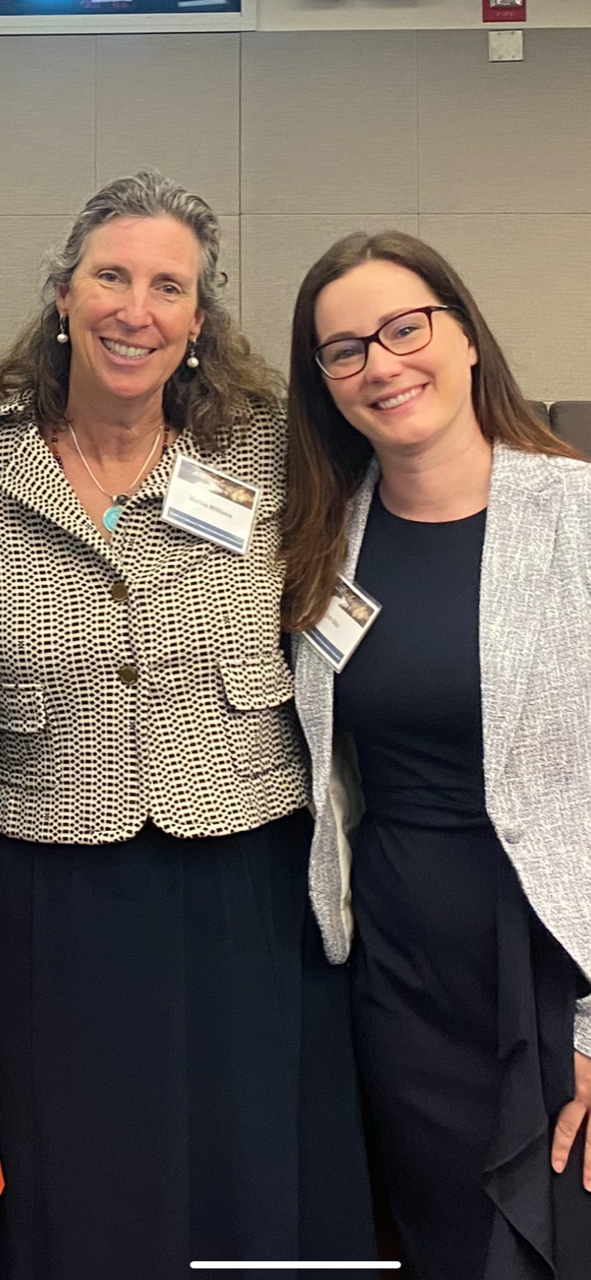A Conversation With Erin Sito About Advancing U.S. Wildlife Connectivity Law and Policy
Over the last few years, the U.S. has seen an overwhelming increase in policy and legislation supporting habitat connectivity. A snowball effect of state and federal interest and action results from decades of unconventional conservation allies coming together and recognizing that wildlife need to roam to survive and thrive. These diverse coalitions have been instrumental in advocating for laws and policies that protect and restore large, connected landscapes.
Wildlands Network has been a leading voice in these coalitions for over 30 years. In recent years, our U.S. Public Policy Director, Erin Sito, has been instrumental in moving the needle on connectivity policy at the state and federal levels.
Read more about Erin’s work in U.S. law and policy, which has helped Wildlands Network build a reputation for drafting and passing bills that work.
“This large-scale government action has been quite an exciting cyclical dance to watch over the years.”
Why are you passionate about restoring, reconnecting, and rewilding North America?
Before going to school for environmental law, my thoughts on how you protect wildlife and wild spaces were likely no different than what the average citizen thought – you simply draw an imaginary line around a place with incredible natural value and protect it. In law school, through an internship with Wildlands Network, I learned that my perspective was outdated. Simply protecting isolated tracts of land would not sustain wildlife. These large core habitats need connections between them to facilitate healthy gene dispersal and allow for animal migrations and animal adaptation to climate change. Learning about this need and the innovative types of conservation strategies to meet this need made me passionate to share what I had learned with the public and with our lawmakers.
What types of viewpoints and perspectives do you bring to your work at Wildlands Network?
While Wildlands Network specializes in utilizing science to inform law and policy, my formal education was centered on communications, political science, and law. In my former legal career, I also spent some time working for federal land managing agencies and for the Oregon State legislature. This background has helped me tailor, draft, and advocate for realistic and workable policy solutions that address habitat fragmentation issues.
Why is public policy important to sustaining and restoring nature and habitat connectivity in the United States? Why should people care about these policies?
Policy can empower agency land managers to act on projects that improve habitat connectivity. Our agencies that manage public lands, wildlife, and the infrastructure that impacts wildlife have many competing priorities. Some individuals working for these agencies may have a passion for protecting wildlife and are naturally thinking about how to incorporate habitat connectivity planning into their work. However, in some cases, unless a law or agency policy is directing the agency staff to manage for habitat connectivity, staff might not be able to access the agency funding or capacity needed to engage in this type of work.
Additionally, private landowner conservation efforts are necessary to reconnect landscapes and facilitate wildlife movement. Voluntary incentives through government programs can also be a useful tool that empowers landowners to engage in this work.
What prompted initial large-scale government action toward habitat connectivity over the last couple of years? Why is this happening now?
In addition to other regional resolutions that spurred interest in preserving habitat connectivity at the federal level, Secretarial Order 3362 was signed in early 2018 to Improve Habitat Quality in Western Big-Game Winter Range and Migration Corridors. This federal action catalyzed a lot of interest in habitat connectivity initiatives at the state level in the West. In the years that followed, many states also became interested in protecting wildlife and motorists and in reducing costs associated with wildlife-vehicle collisions.
These combined interests lead to a groundswell of state legislation tasking the state transportation and wildlife agencies with coordinating and prioritizing where to site wildlife crossings and carry out habitat connectivity projects.
This state groundwork created a need for federal grant dollars to construct wildlife crossings, so in the 2021 Bipartisan Infrastructure Law (BIL), lawmakers created the first dedicated grant program for wildlife crossings, providing $350 million over five years to help with crossing project and research costs. After the BIL passed, even more states became interested in passing legislation to help facilitate the research and additional funding needed to apply for this newly created federal funding opportunity.
This large-scale government action has been quite an exciting cyclical dance to watch over the years - where the federal government creates a policy and incentive, the states passionately engage in this work, and the federal government continues to adapt and develop needed policy to support local action.
Which recent state or federal commitments are you most excited about, and why?
At the federal level, I am very excited about the Bureau of Land Management (BLM) guidance to enhance Habitat Connectivity on Public Lands that was issued last November 2022. Within the next year, the BLM will complete an initial assessment of priority habitats and the connectivity between them on BLM-managed land. With this connectivity assessment, the BLM will be able to develop a consistent framework and tools for its state and regional staff to use during resource management planning.
At the state level, it has been exciting to see so many copycat bills introduced during the 2023 state legislative sessions modeled after the original “Wildlife Corridor Action Plan” framework that we drafted in 2018 and passed in 2019 in New Mexico and Oregon. Seeing other states buy into this model shows that it has been a successful and workable framework, which is incredibly gratifying to me, because I helped create that framework as a legal intern for Wildlands Network in 2018. It has been a highlight of my professional career to watch this model make so much progress.
How have you and Wildlands Network been involved in these changes?
At the state level, Wildlands Network jumped into crafting state legislation in 2018. Since then, we have been instrumental in developing and advocating for state corridor and crossing legislation in New Mexico, Oregon, California, Colorado, Utah, and Virginia. Our reputation for drafting and passing workable legislation, and the demand for state action after the passage of BIL, has recently led us to engage in other states like New York, North Carolina, and Nevada as well.
At the federal level, our connectivity policy coalition and associated partner organizations were instrumental in providing needed education to the lawmakers who were interested in and eventually included the Wildlife Crossings Pilot Program grants within the BIL grant slate.
How do you envision Wildlands Network’s role in helping shape conservation policy in the US in the future?
At the federal level, it is clear the Biden administration is supporting locally lead connectivity initiatives. Wildlands Network has an opportunity in the next few years to craft and advocate for federal policy that furthers these local efforts nationwide, continuing the cycle of state action catalyzing federal support and federal support incentivizing continued state action.
At the state level, Wildlands Network will continue to develop and advocate for state legislation that promotes wildlife crossing infrastructure as well as habitat connectivity initiatives that go beyond roads. Wildlands Network will additionally use its law and policy expertise to develop a new suite of needed laws and policies to meet the needs of wildlife facing other emerging habitat fragmentation issues.
Is there any other information you would like to share?
While Wildlands Network has been a major player in the connectivity science and policy space for over 30 years, we have seen a tremendous forward trajectory of connectivity policy in the last decade due to additional support from a very passionate community of conservation partners within federal and state agencies, tribal nations, and other conservation organizations interested in restoring and protecting habitat connectivity. These groups have collectively studied, analyzed, and promoted the best practices on how to start managing a connected network of wild lands so life in all its diversity can thrive.





